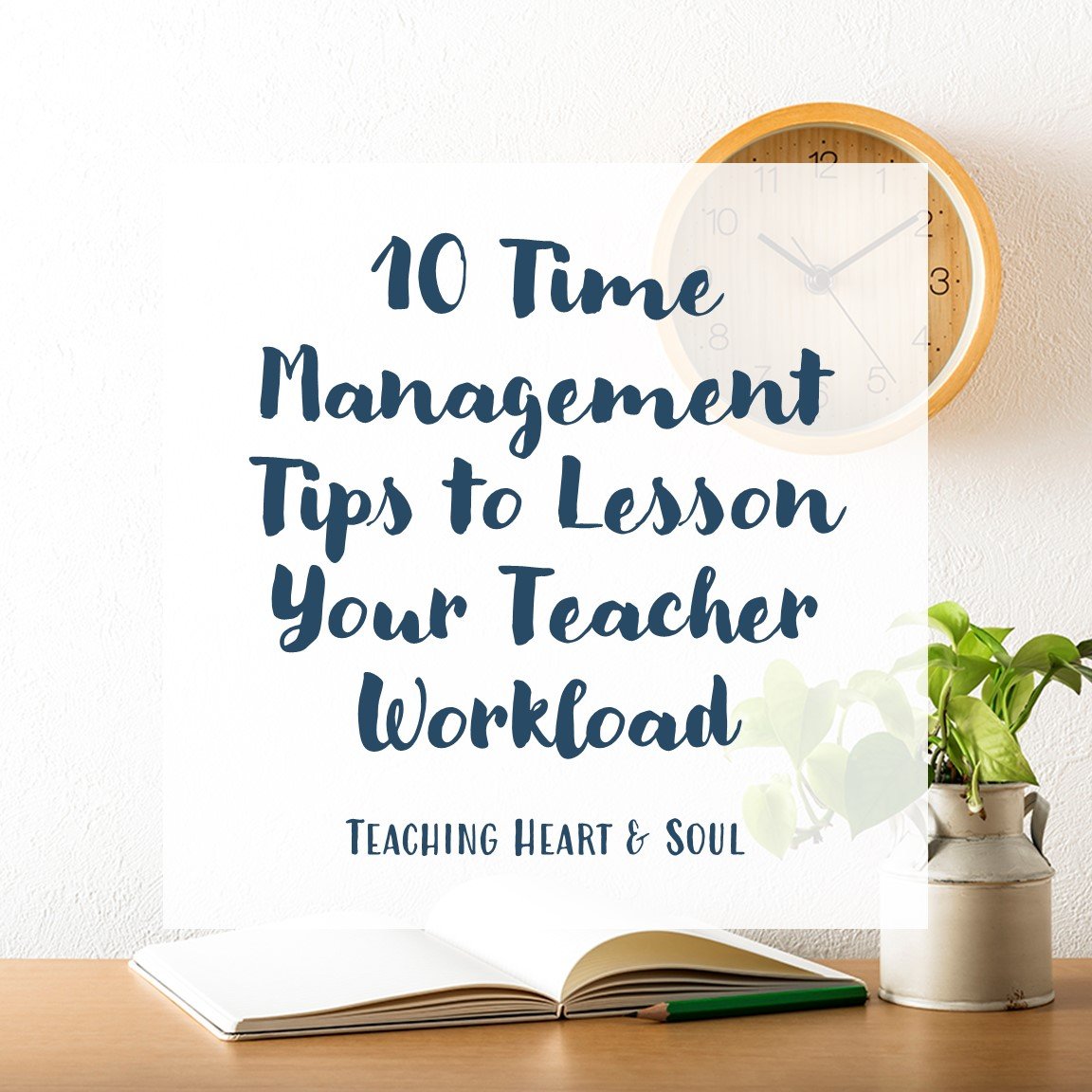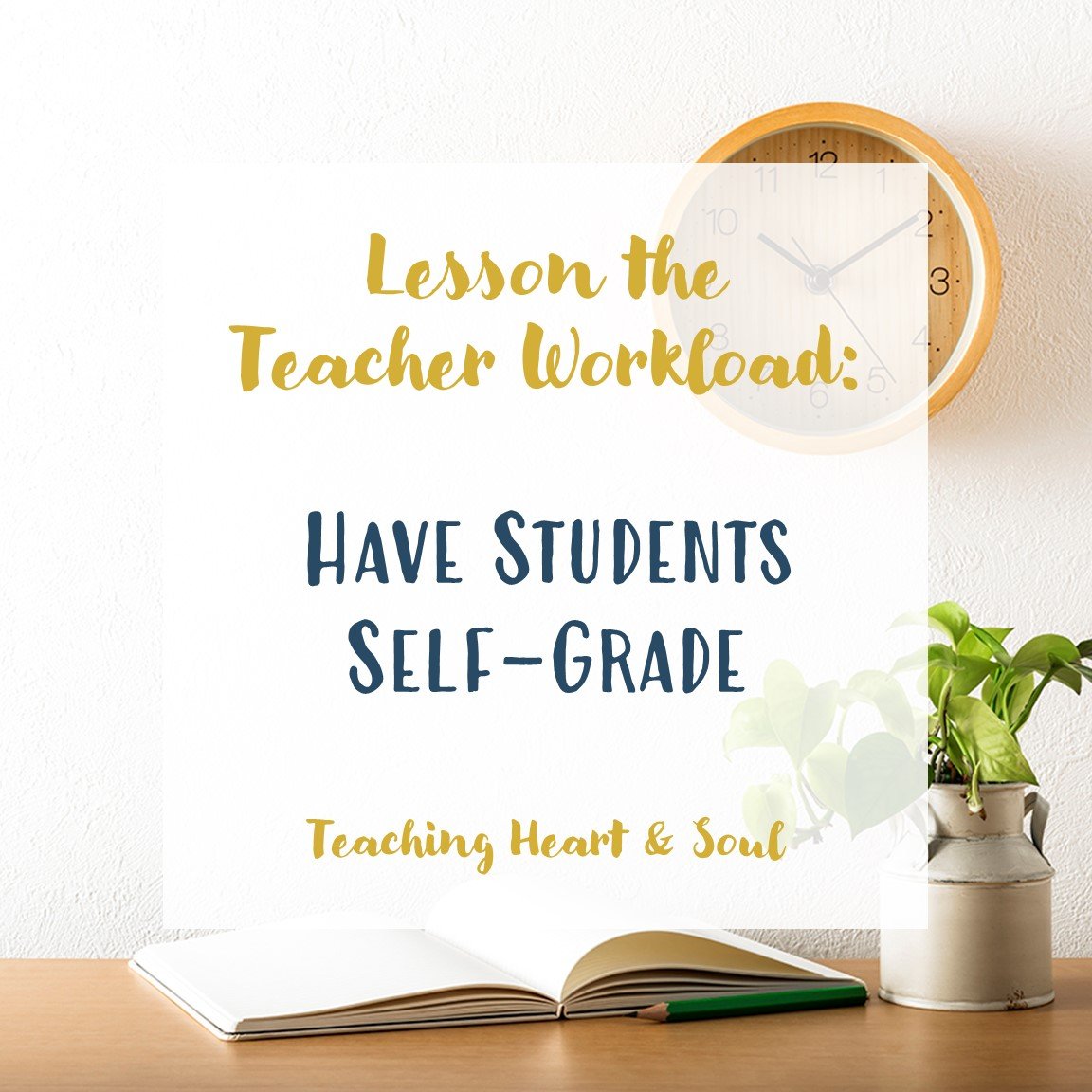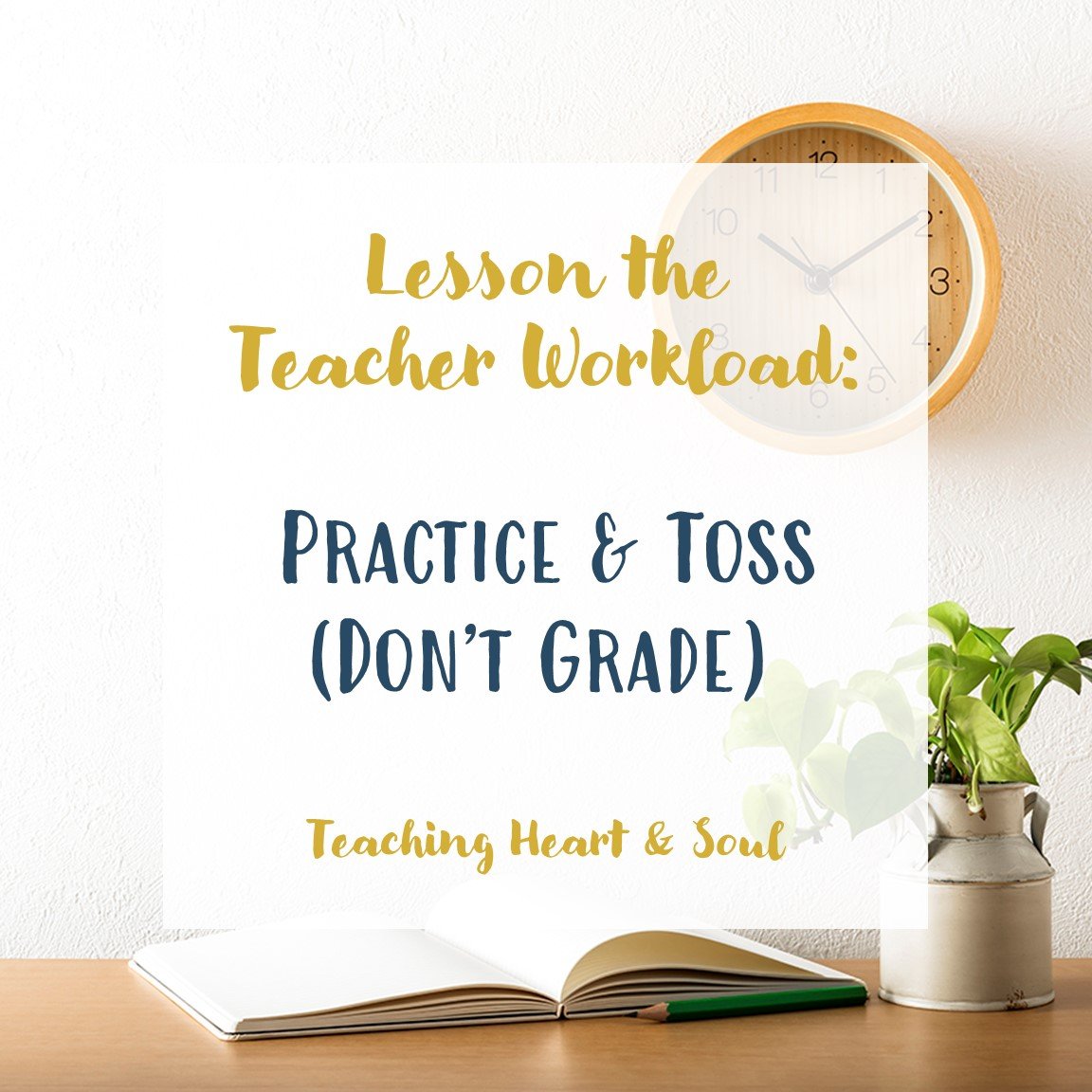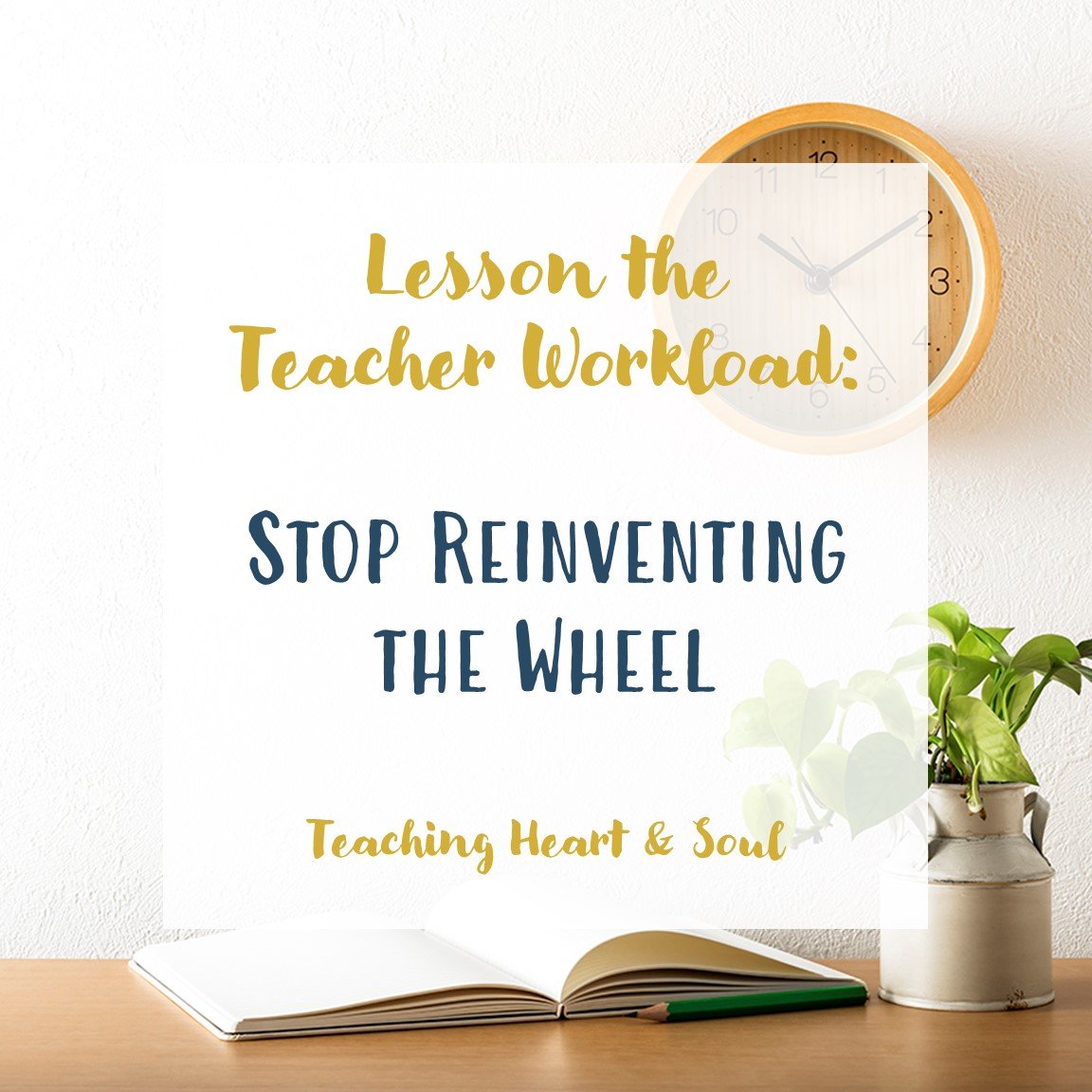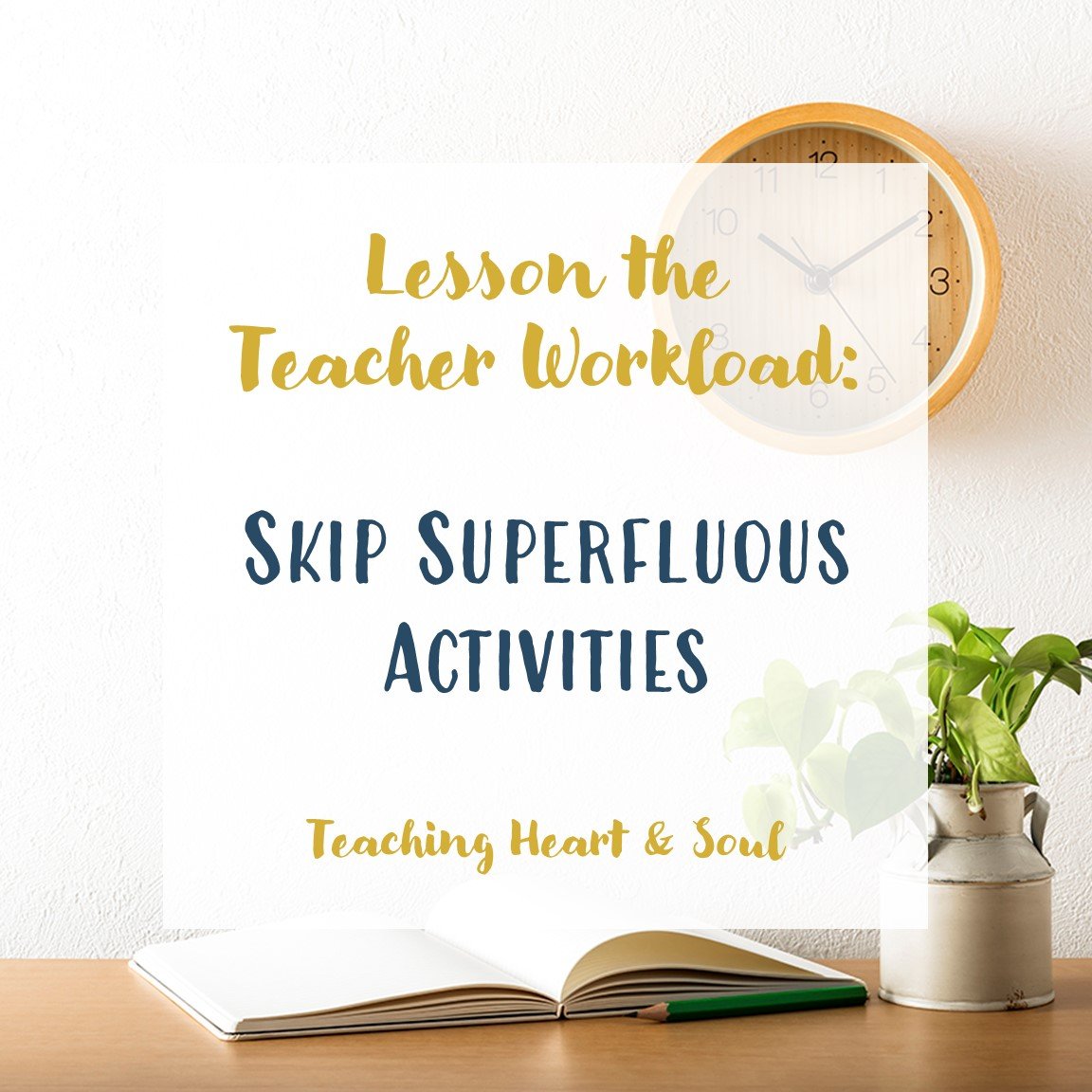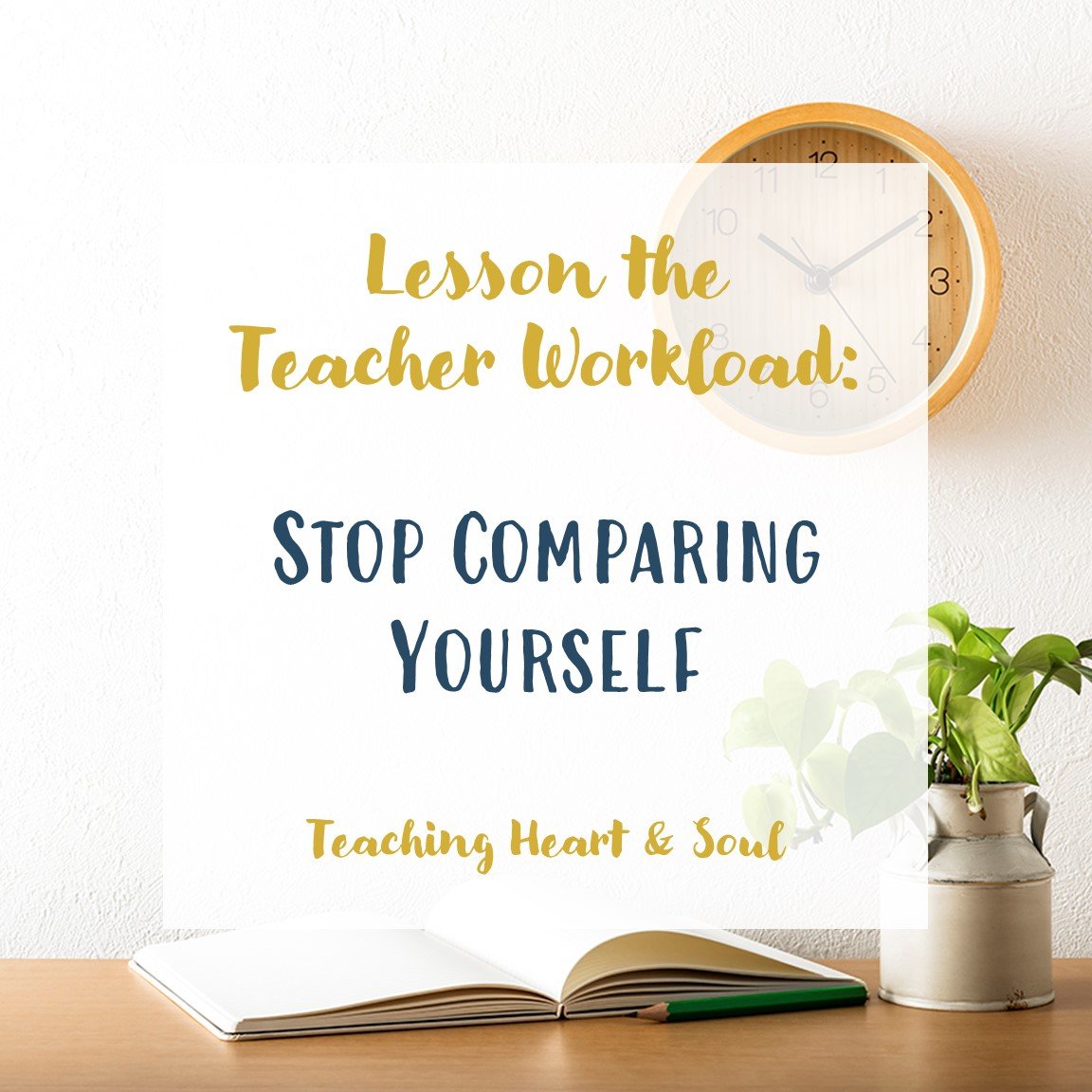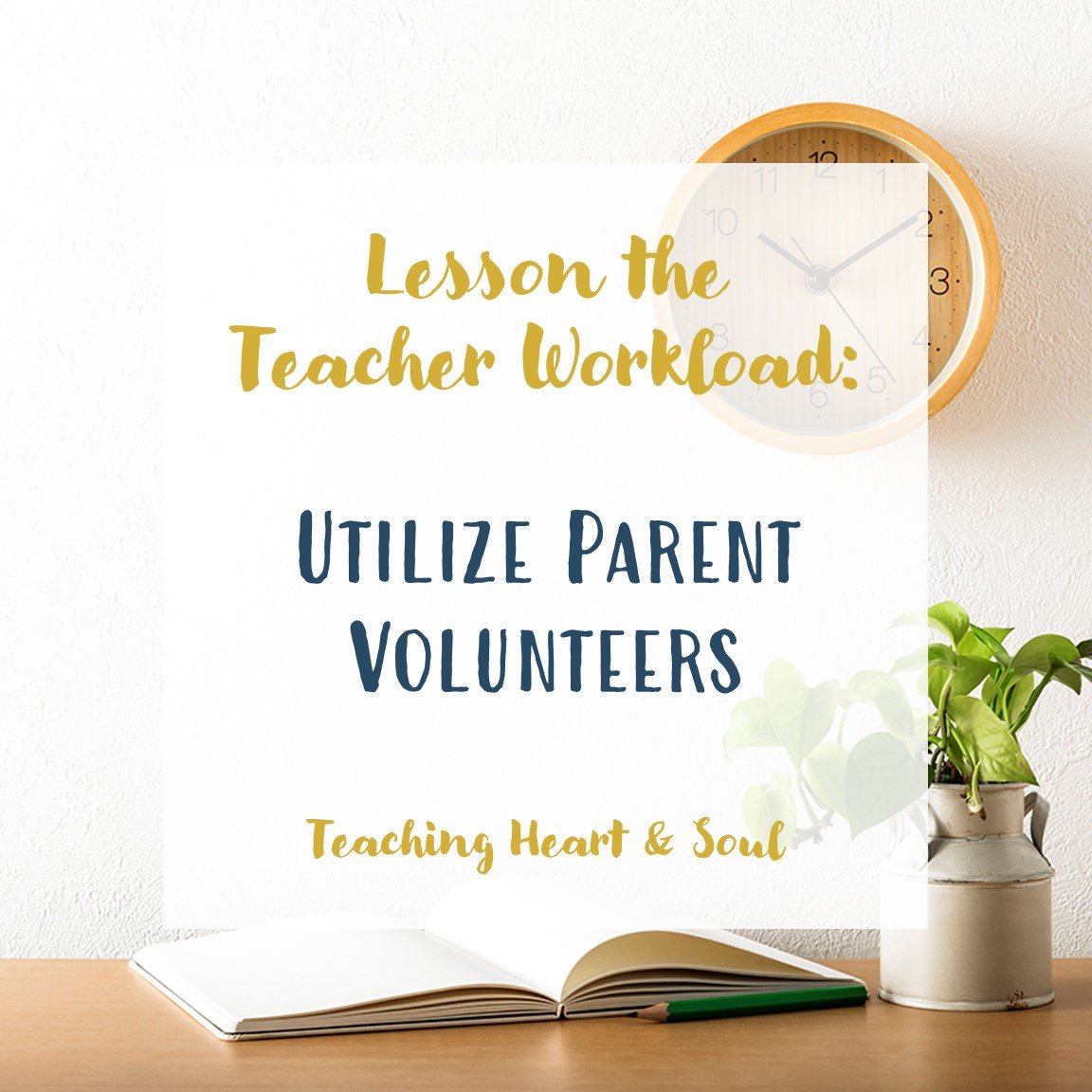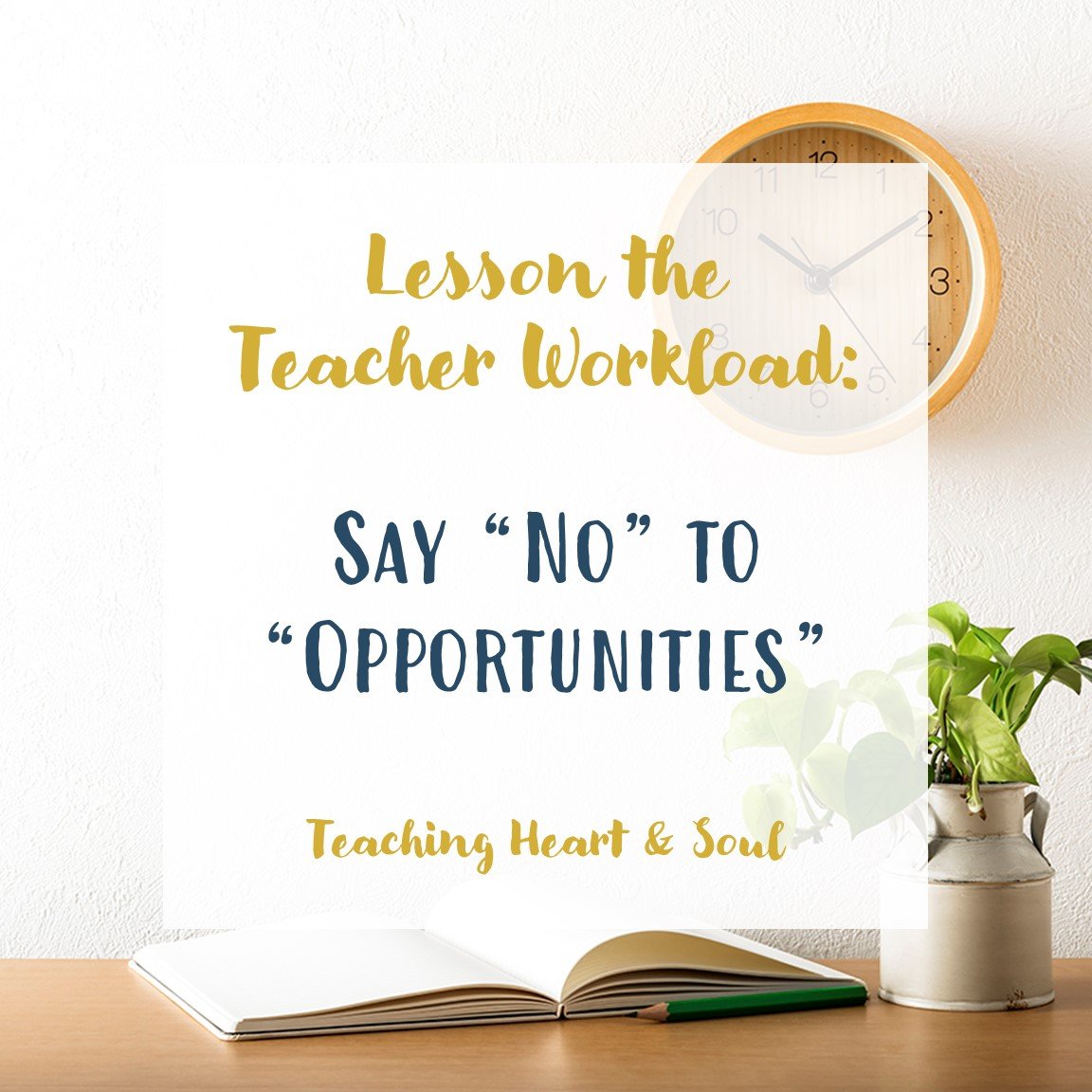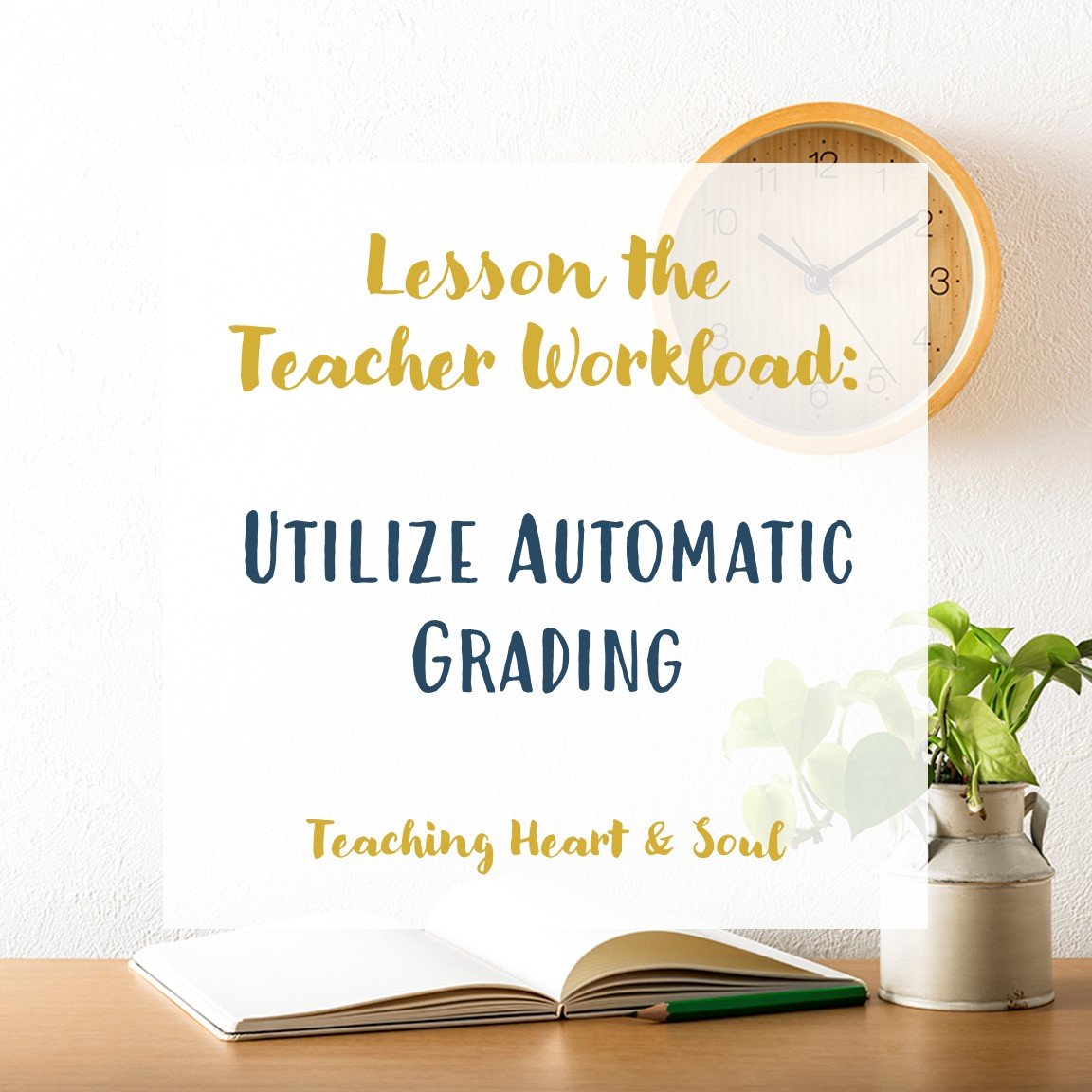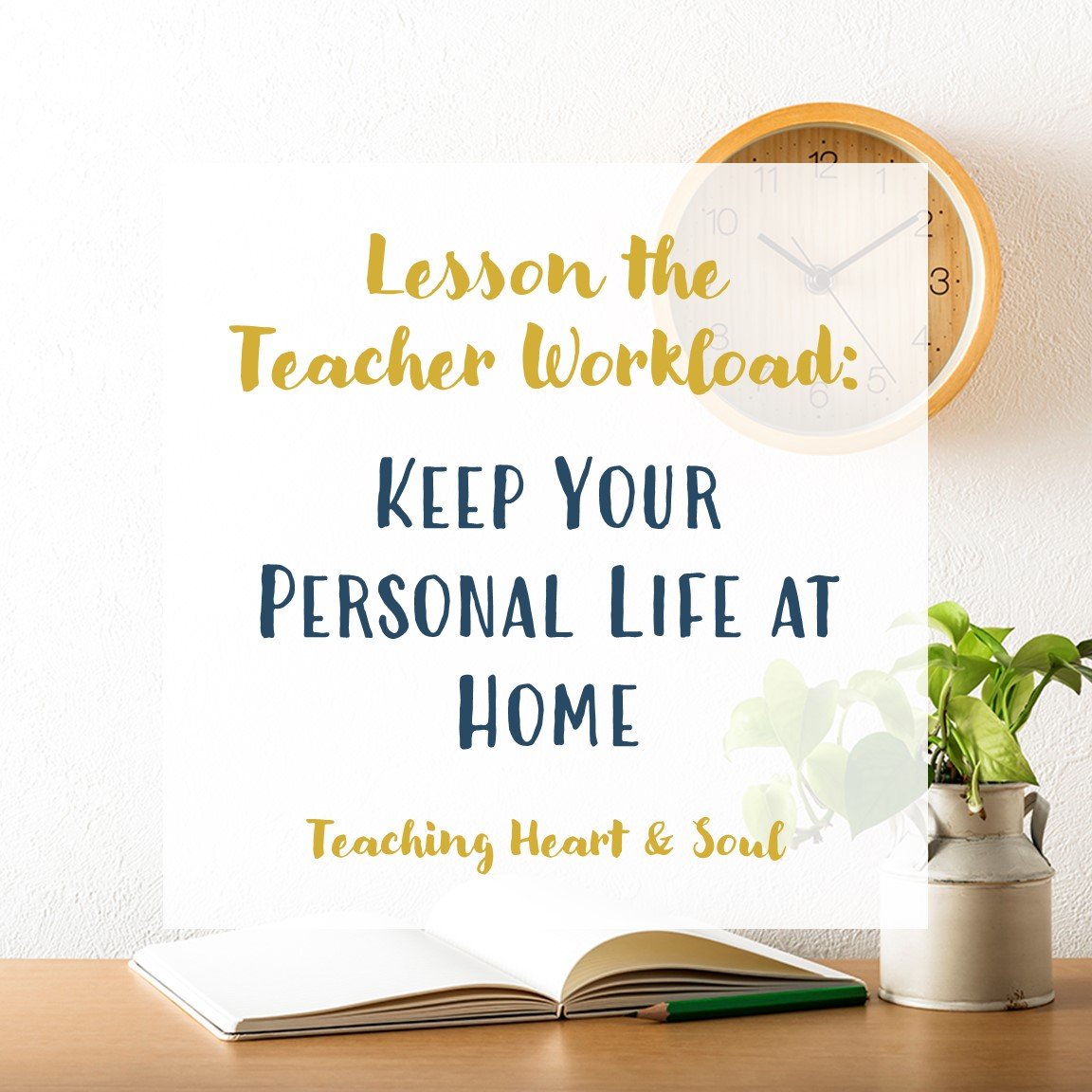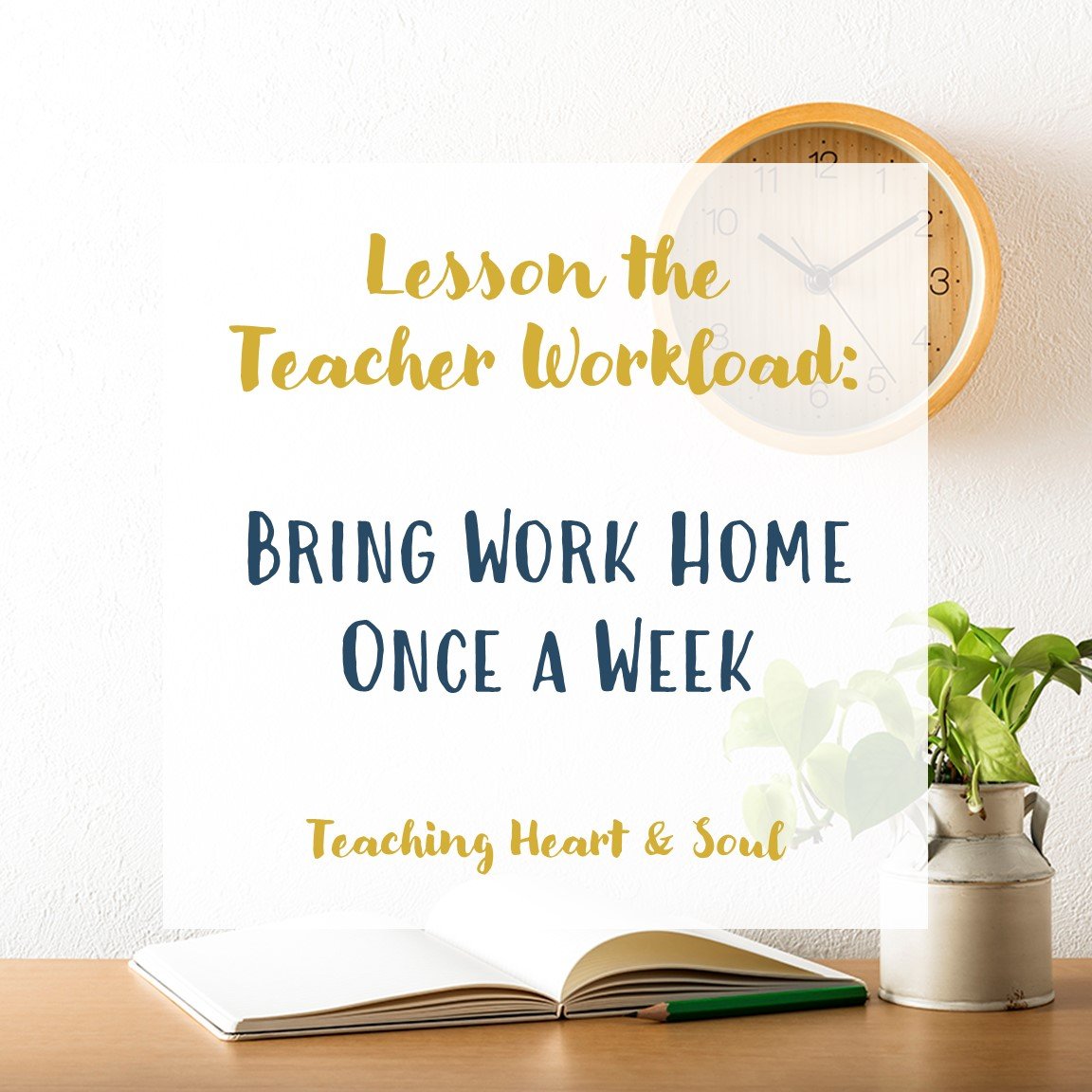10 Time Management Tips to Lessen Your Teacher Workload
When you get off work, do you drive home, take your shoes off, and enjoy your family and your own children? Or do you pull out a stack of papers to grade and get right back to work?
If you’re like most teachers, you take work home with you a majority of the time.
However, if you’re going to take care of yourself, it’s important to find a better work-life balance.
Teaching is a demanding job and challenging profession that requires a significant amount of time and effort. Teachers' workload involves a variety of tasks, such as lesson planning, grading papers, providing individualized instruction, and managing classrooms. On top of that workload, teachers also have to attend professional development sessions, meetings with school staff and parents, and provide emotional support to students.
The average teacher workload can be especially challenging for average teachers who are tasked with teaching more students and juggling multiple responsibilities. This workload can also affect student learning, as teachers may not have enough time to provide individual attention and instruction to each student. School leaders play an important role in supporting teachers and ensuring that their workload is manageable.
To alleviate the teacher workload, schools can take steps such as providing more support staff, hiring additional teachers, and implementing better time management practices for educators. Additionally, school systems can provide professional development opportunities for teachers to improve their instructional skills and reduce the time spent on lesson planning. School leaders can also prioritize the well-being of their teachers by creating a culture that values work-life balance and provides educators with resources to support their mental and emotional health.
The teacher workload is a significant issue that affects teachers, families and students. By implementing effective solutions and providing more support to teachers, schools can improve the quality of education and ensure that teachers have the resources they need to succeed. Ultimately, supporting teachers is essential to creating a positive learning environment and fostering student success.
Here are 10 tips to help you leave work at work so that you can be present at home:
#1 Have Students Grade Their Own Work
This is a great way to save time and stop bringing papers home.
I did this with kids as young as 2nd-grade, so any intermediate class should be able to handle the responsibility.
Maybe you don't think your students are trustworthy enough to do this. If so, make sure your least-trustworthy students are near you, so that you can keep an eye on them.
Have all of your students clear off their desks completely so that you can see what each student is doing.
Then, pencils go away, and pens come out. (I had my students drop their pencils on the floor next to their desks, which they thought was hilarious.)
Your students aren't going to be as accurate as you are, so you will need to double-check their work before inputting grades into the grade book, but this strategy still saves you time.
This is also a great way to handle worksheets or homework that you are not going to put into the grade book. Your students get to see how well they did (and what they need to work on), but you don't have to spend any of your time grading their work.
#2 Don't Grade It
That brings me to our next tip: don't grade everything.
Sometimes you will have your class do an activity to practice or develop a skill or so that you can gauge your students' understanding of a topic before you move your focus onto the next part of your lesson.
Glance at your students' work or have them give you a thumbs up or thumbs down to assess their understanding, give feedback and then move on.
You do not have to grade every worksheet that you do in your classroom. This is the perfect opportunity to throw those worksheets into the recycling bin and move on!
Don't let your students know what you're doing though. Collect your students' work so that they still do their best, but place it at the bottom of the recycling bin when they're at lunch.
#3 Don't Reinvent the Wheel
Reuse lessons from last year.
Ask another teacher for her lesson plans.
Search the internet for ready-to-go lessons.
Utilize Teachers Pay Teachers.
These days, we have so many options! There is no reason to create a lesson from scratch. Instead, find a lesson that is already prepared.
At the least, lesson plan with another teacher so that you're sharing the load.
#4 Skip the Superfluous Activities
Skip them especially if they take a lot of prep work!
There are a lot of fun and cute ideas to incorporate into your classroom, but if you're taking work home every night, give yourself permission to skip it. I refuse to do lapbooks for this reason.
Instead, consider an educational movie day so that your students are engaged as you catch up on grading. (Yeah, yeah, we all do it!) This is a great option to do at the end of a novel study if there is a corresponding film.
#5 Don't Compare Yourself to Other Teachers
It may be difficult to walk past your coworker's Pinterest-worthy classroom every day when yours is plain and your worksheets aren't as cute.
However, consider the cost your coworker is paying in extra hours to get her classroom to look like her Pinterest board.
If you're willing to put in the unpaid overtime, go right ahead and try to keep up! But, if your goal is to get home at a reasonable hour, skip the fancy décor and worksheets that you do yourself.
You may not have the prettiest classroom, but you will have more time to spend with your family.
#6 Utilize Parent Volunteers
When I was in second and third grade, for example, I remember my mom coming into our classrooms at school all the time. She went to the library with us, made copies, led small groups, and prepped activities.
At the time, I thought it was great that I got to see my mom at school. Looking back, I realize how valuable my mom must have been to my teacher during those two years.
You're the one who needs to grade student work, analyze data, and attend meetings, but a parent volunteer can make copies, organize activities, and create awesome bulletin boards for you!
Some parents are organized, crafty, and just waiting to be asked to contribute!
#7 Give Students Jobs
Sometimes the little things add up.
You spend an extra 5 minutes feeding the classroom fish. You spend another 10 minutes sharpening all of the pencils before you go home. It takes another 5 minutes to drop something off at the front office.
Stop!
Even with children in kindergarten, your students are capable of doing these tasks for you.
Utilizing student volunteers is a great way to lighten your load. It's also a great way to teach your students responsibility and improve outcomes in character development.
#8 Say "No"
Principals and schools are always asking teachers to volunteer for extra duties, help out at a fundraiser, or support students at a community event.
If you're at a point where you have the time and ability to help a person out, that's great! However, we sometimes allow ourselves to become overwhelmed because we try to keep up with how much our coworkers are helping out, or we're just trying to do the right thing.
Adding more to your plate is not the right thing if it keeps you away from your family at home.
It's okay to say no.
#9 Utilize Automatic Grading
This year, my fourth-grade team decided that we needed our math classes to practice multiplication facts every day. A couple of years before, I had done this with my second-grade students, and it required a lot of copying, grading, and organization. I did not want to do this again!
Instead of having my students work on their multiplication facts on paper and having to make copies, grade them all, and organize everything, I created Google forms that were automatically graded. You can check them out here.
It was such a timesaver!
There are so many online learning options that are graded automatically. Find them on the internet, or take turns with your coworkers to create them for each person on the team.
#10 Keep Your Personal Life at Home
Another way to make sure you keep stress at work from coming home with you is to keep your personal responsibilities at home.
I have seen many many educators make personal calls during school hours, order groceries online during their plan time, or even play games on their phones during class. (That teacher didn't return the next school year!) Then they would stay late after school to do more work!
If you don't want your work to come home, don't bring your home life to work.
There are times when planning time is the only time you have to call the doctor or do something else important, but as much as you can, limit your personal responsibilities to your lunch break hours.
Bonus Tip: Only Bring Work Home Once a Week
I know that this post is about keeping work at school, but this bonus tip is for those who don't think there is any possible way to do this.
Even if you bring your work home every day, it's very possible that you only get to it once a week anyway. (That was me my first year of teaching!)
Instead of stressing out every night because you're behind on work, commit to only bringing work home once a week.
You can even find a coworker to do this with at home or at school. Grab a glass of wine and enjoy the company!
Teachers Pay Teachers
I have worked at a few different schools that provided varying degrees of curriculum materials. At one school in particular, we were given a broad overview of what we were expected to teach, but limited resources.
I stayed at school for so many extra hours creating resources for my classroom and the other grade-level teachers. This is actually what got me selling on Teachers Pay Teachers myself. However, if you are trying to limit your workload, I suggest buying resources from Teachers Pay Teachers instead. There are so many great options that supplement what you're already doing. You can also buy a full course or curriculum as well.
If you want to see what I have on my store, check it out here.
Want to make planning a little easier to help you cut down on prep time? Click here for a FREE pdf with lesson hooks, differentiation strategies, and formative & summative assessment ideas.
